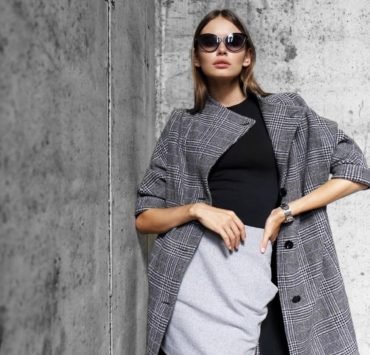Shoe Tips: This Is How to Choose the Best Shoes for Your Child
- When it comes to choosing shoes for your child, there are certain things you should know. You can check out our best shoe tips here.

Do you relish the idea of shopping with your toddler? Other parents don’t, either.
You’re not alone, yet you’re also on a quest to find the right shoe for your child. How do you do that without dragging them along and making them try on tons of pairs?
Fortunately, there are ways to measure your child’s feet to help you find shoes that fit without the marathon shopping excursion. Follow the shoe tips below for an easier time choosing your child’s next pair.
Arch Support for Kids
If you’re looking specifically for baby shoes for flat feet, don’t worry. All kids are born with flat feet, so arch support for kids isn’t really necessary. Kids don’t develop their arches until around age 6 or even later, so finding special shoes isn’t a must.
Some research supports finding shoes with arch support to help kids develop their arches faster, yet results are conflicting. Talk to your pediatrician about whether they recommend arch support shoes for your child, and ask them which type of shoes they recommend.
Shoe Tips: Toe Box
The toe box of the shoe is where the child’s toes fit into the shoe at the end. It’s important for kids to have enough space for their feet to grow and develop. That means that while you may want to find shoes to make kids taller or ones that have stylish narrower toes, that shouldn’t be your priority.
Instead, look for a wide toe box on your child’s new shoes. This gives their toes room to move around and their feet space to grow and develop properly.
Recent studies show that children who go barefoot develop better motor skills. Shoes that mimic being barefoot are increasing in popularity, partly because they have the space for the toes to spread.
One of These Things Is Not Like the Others
Most people have one foot that is larger than the other, and children are the same way.
Unlike the old song, you don’t have to point this out to your child. Instead, make sure you fit the shoe to the larger foot. Always opt for a larger size if they’re between sizes.
There are several ways to measure your child’s feet. One way is to have them stand on a piece of paper and trace around their feet with a pencil. Then you can let them go play while you measure the outlines you traced and match them to a size chart.
If that isn’t working for you, trace the child’s foot outline on a piece of cardboard. When you cut, leave a little extra space around the outline (about 1/4″). Use these cardboard forms to put inside shoes and look for a good fit.
This saves you having to rely on the child to tell you how the shoes feel inside. They don’t like trying on one pair after another, and it will save you the headache.
You can have your child stand with their back to the wall, too. Mark a line at the end of their toe, and then let them walk away. Measure from the wall to the line to get an accurate idea of how big your child’s feet are.
Go with a Brand You Trust
If you’re looking for the best shoes for kids, choosing a brand you know has a reputation for caring for kids’ feet is a good option. For example, Bundgaard has been making shoes for kids since the early 1900s.
They’re tried and true, but they’re not stuck in the past. They’re paying attention to the barefoot movement and the shoes they make reflect the newest research and development.
When you see some shoes you like, if you aren’t sure about the brand it’s okay to do a little research. Start by searching for the company online, and add the search term, “research” to see what populates.
You can also check with other parents, especially the parenting blogs you know and trust. See what brands they recommend and why.
While searching for the specific brand and “reviews” can help, sometimes it shows you a skewed list of results with only good reviews at the top. You have to dig deeper for the more negative assessments.
Comfort
If your child is a little older, they may be able to tell you how their feet feel inside the shoe. You want to make sure the shoes you buy are comfortable.
Not every child will love wearing shoes. Yet you may be able to convince them to try them out if you help them find a pair that feels more like wearing slippers or going barefoot.
It can help if you feel inside the shoe first for cushioning and any defects. Look for out of place liners or wrinkles in the sole. Feel for any threads sticking out or bumps that could irritate your child’s foot.
Bring a pair of socks with you to make sure your child’s foot has extra room. Even if you think you know how much extra space to leave, without the socks present the child can’t feel the difference. Let the child help you understand whether their feet feel right in the new shoes.
Let Them Breathe
Children’s feet sweat a lot when they’re young. Socks help absorb moisture, but remember to pack an extra pair so you can change them if they get uncomfortable. Look for shoes that help minimize moisture, too.
Some pairs advertise this feature, but most of the time you’ll have to look for specific materials. Natural fibers and materials like leather and canvas are helpful for letting feet breathe. Plastic or synthetic materials don’t allow for as much airflow, so they won’t be as helpful for minimizing sweating.
Happy Feet
Finding shoes that your child likes to wear and feels comfortable in is a challenge, especially when they’re too young to communicate well. Follow the above shoe tips to help you find brands you trust and comfortable shoes.
Let them breathe and leave extra space for socks and different size feet. This will give you a better chance of making your child’s feet happy to be in shoes.
Did you find this article helpful? Check out the rest of our website for more information!





